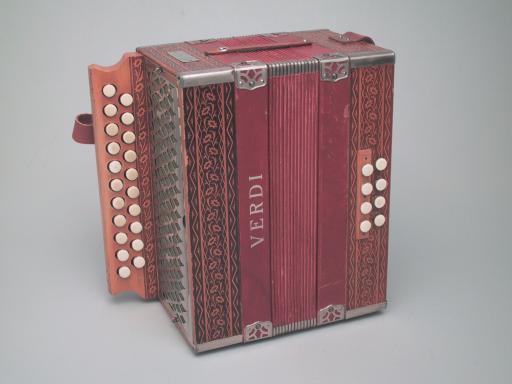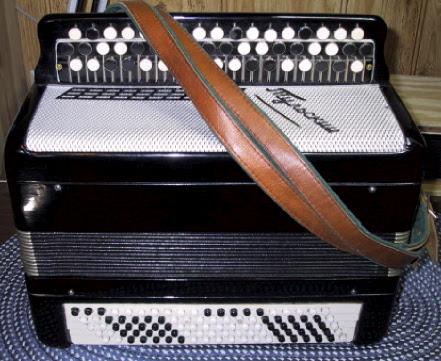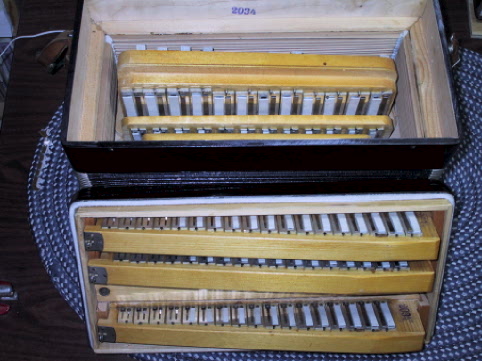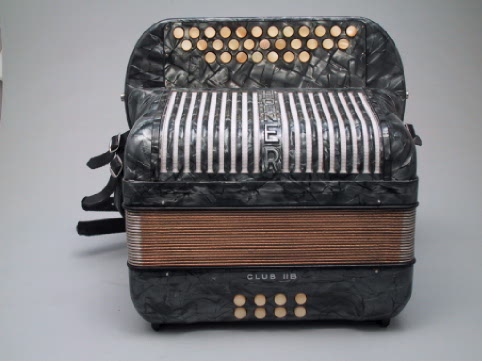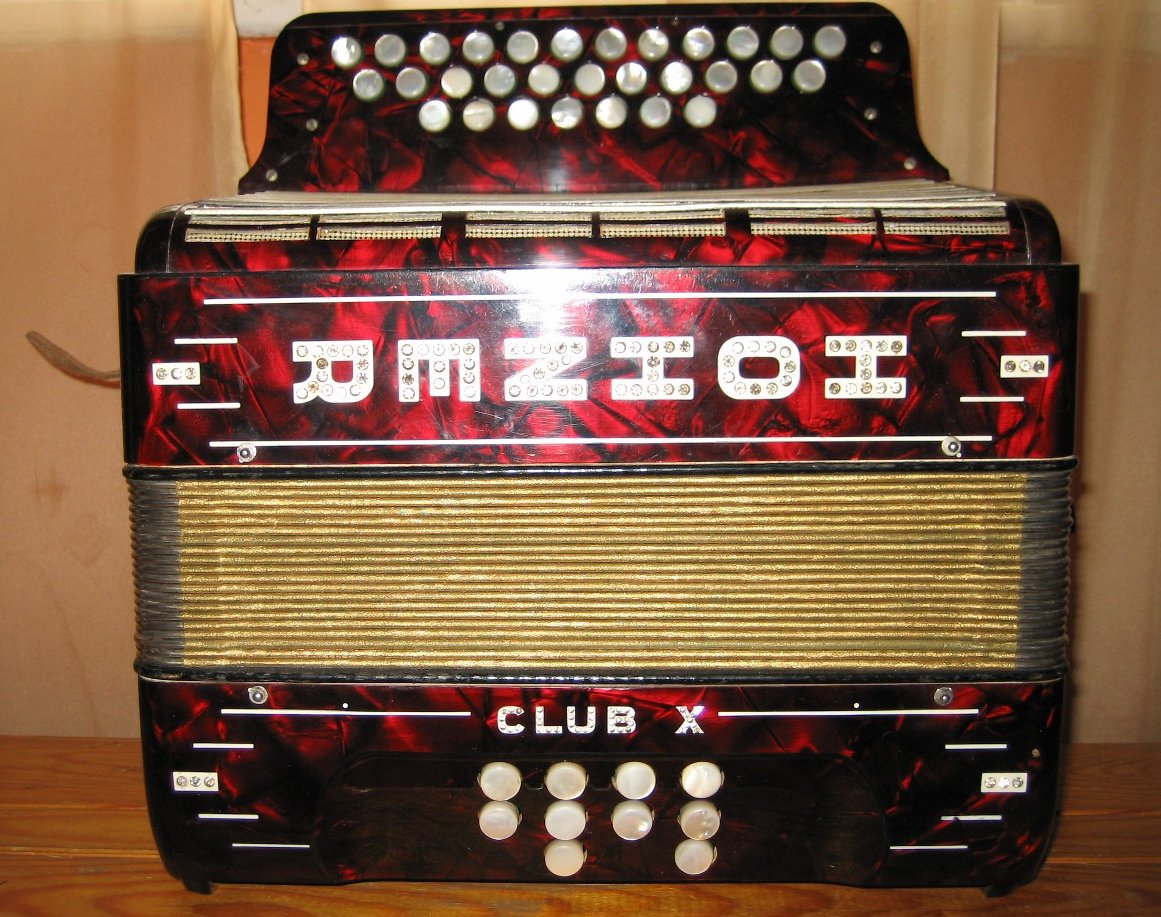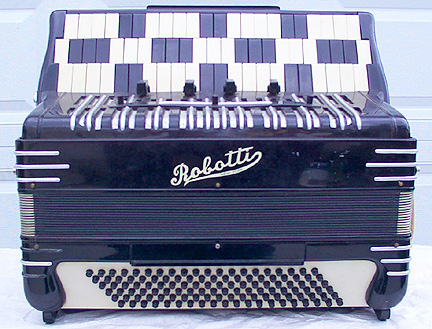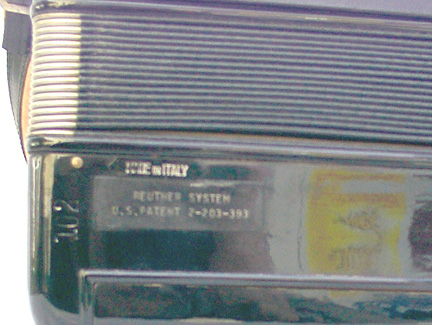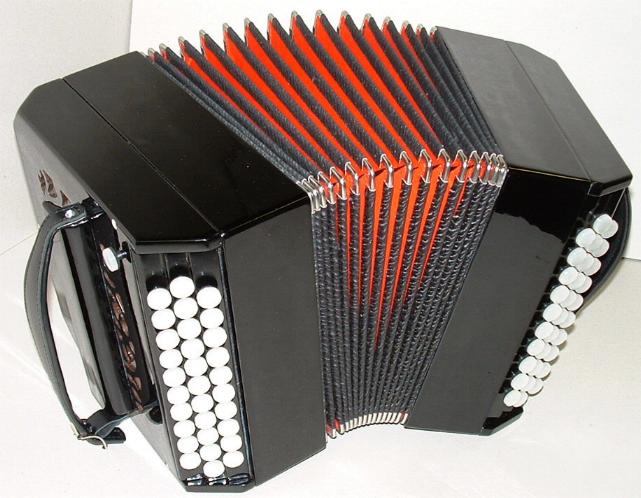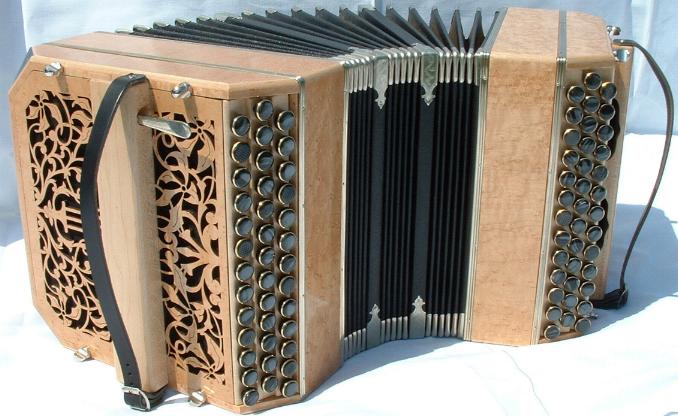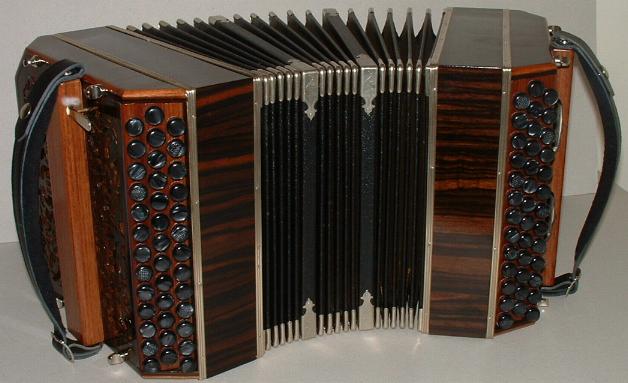Three-Row Tex-Mex
Accordion / Acordeon Tejano / Acordeon Conjunto
Norteño
Here's some advice I gave in email:
NNNNNN@aol.com wrote:
>What brands would you recommend. I want it to
accompany songs, but also to play dance tunes.
If you want to see the tops in tex-mex 3-row button
accordion,
go to Reyes Accordions (http://www.reyesaccordions.com/ )
and
window-shop the Hohners and Gabbanellis. Expensive but
good!
If you want a medium-to-very-good 3-row Hohner Corona II
Classic
(the made-in-Germany one, not the made-in-China) is about
$1200
I think. Talk to Lark In The Morning
(http://www.larkinam.com).
If what you want is a quick and economical entrée into
3-row,
buy yourself a Hohner Panther from some place like Boaz
Accordions,
http://www.boazaccordions.com/ $395-$450.
If you're brave and knowledgeable, shop eBay. I picked up an
el-cheapo
Chinese made 3-row, brand new, for $165. Though it was brand
new,
I had to do some repairs and tune it to make it playable, but
that done,
it's an okay instrument and I'm performing with it.
Good luck!
The left-hand side has basses and chords. In the chart below
of the Garmoshka left-hand side, the bold letters are bass
notes and the italics are chords.
